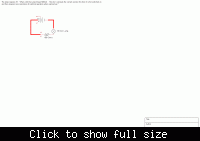expelleior
Member level 1

current voltage resistance
Hi all I just joined and hope u can help
,
I have a couple of begginners books and looking at some circuits I would like some clarification if you can. I have been building simple circuits following diagrams and getting things working without any real undersrtanding. I buy parts, they come with instructions which are mostly simple to follow.
Could you help with basic questions below ->
Connecting up LED's and push button switches shows that the IO pins of the microcontroller are pulled low with a 10K resistor. So then you hit the button and open a path with only 470 Ohmn resistor.
Thats all good and I get it. However then they show a diagram with LED's connected to Vdd+ and the IO Pins. No switch used. No Pull Down resistors used.
They say that Pull Down or Pull UP resistors are used to stop the Pins floating.
So you use code to tell processor PIN 1 HIGH or PIN 1 LOW. So If you are not using a switch then the PINS don't Float ?
Also with regard to I = V/R , If the voltage is 5V and the resistor is 470 Ohms
there is a LED drawing 1.4V
I = 3.6/470 = .007mA
So can you also say that the LED resistance is 244 Ohms therefore ->
Is this ok , R = 5/.007mA so then R = 714 Ohms ?
Just can't wait till I get onto voltage dividers !
Hi all I just joined and hope u can help
,
I have a couple of begginners books and looking at some circuits I would like some clarification if you can. I have been building simple circuits following diagrams and getting things working without any real undersrtanding. I buy parts, they come with instructions which are mostly simple to follow.
Could you help with basic questions below ->
Connecting up LED's and push button switches shows that the IO pins of the microcontroller are pulled low with a 10K resistor. So then you hit the button and open a path with only 470 Ohmn resistor.
Thats all good and I get it. However then they show a diagram with LED's connected to Vdd+ and the IO Pins. No switch used. No Pull Down resistors used.
They say that Pull Down or Pull UP resistors are used to stop the Pins floating.
So you use code to tell processor PIN 1 HIGH or PIN 1 LOW. So If you are not using a switch then the PINS don't Float ?
Also with regard to I = V/R , If the voltage is 5V and the resistor is 470 Ohms
there is a LED drawing 1.4V
I = 3.6/470 = .007mA
So can you also say that the LED resistance is 244 Ohms therefore ->
Is this ok , R = 5/.007mA so then R = 714 Ohms ?
Just can't wait till I get onto voltage dividers !


